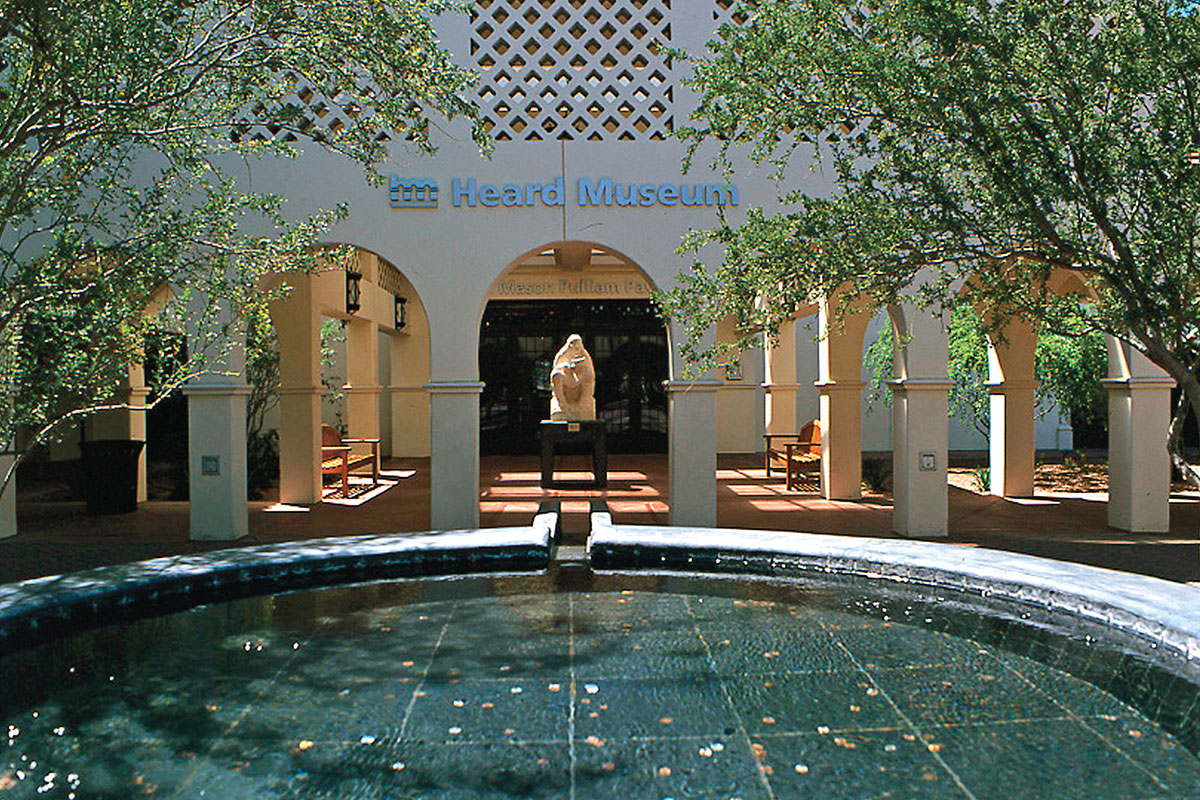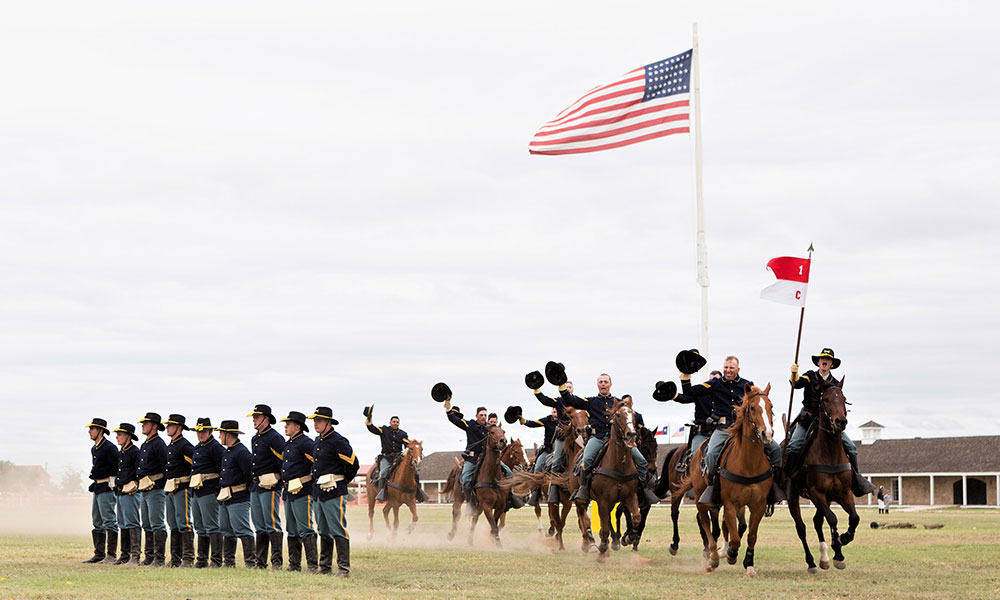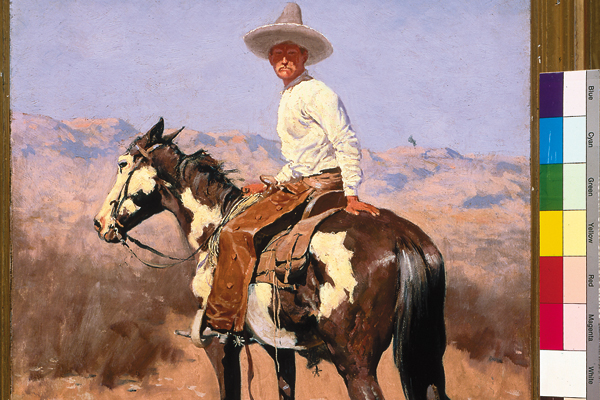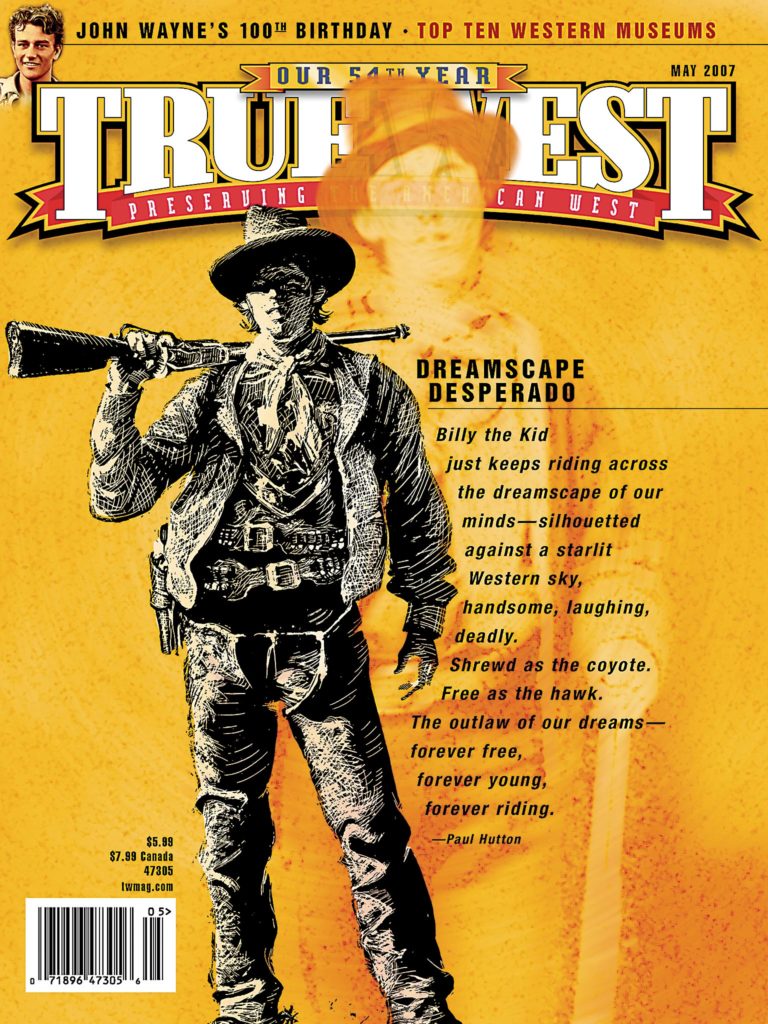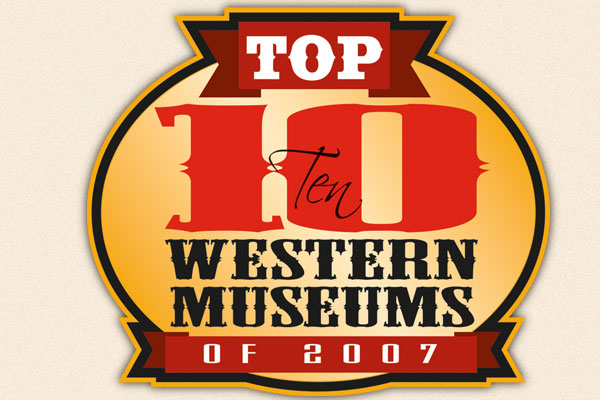 Charles Lummis had a vision when he founded the Southwest Museum of the American Indian 100 years ago, starting a small museum that would grow into one of the most extensive collections of Indian artifacts, totaling some 240,000. Yet the Los Angeles museum hits the century mark in a state of controversy.
Charles Lummis had a vision when he founded the Southwest Museum of the American Indian 100 years ago, starting a small museum that would grow into one of the most extensive collections of Indian artifacts, totaling some 240,000. Yet the Los Angeles museum hits the century mark in a state of controversy.
Last year, the Southwest closed its doors to start a three-year project to clean and catalog its collection and, perhaps, move to a new building in Griffith Park next door to the Museum of the American West.
In 2003, the Autry Museum acquired the struggling Southwest, one year after taking over the Women of the West Museum, founded in 1991 in Boulder, Colorado. Thus, the Autry National Center was created to oversee the Autry, which was renamed the Museum of the American West, as well as the Southwest and Institute for the Study of the American West.
Walking from Ohio to Los Angeles to take a job at The Los Angeles Times in 1884, Lummis was captivated by the Southwestern Indian culture during his journey. He began dreaming of a museum housing artifacts of the Indians of Arizona, New Mexico and Utah, finally incorporating the Southwest Museum in 1907.
Construction of the Spanish Colonial Revival museum building began in 1912, and the Southwest opened its doors two years later.
The Friends of the Southwest Museum Coalition has been fighting to keep the Southwest in its historic Mount Washington location, where it was LA’s first real museum. Autry officials say that’s no longer feasible. Phrases like “cultural piracy” and “saving the collection” are hurled like Molotov cocktails during a gang fight. The battle still rages.
So although there’s turmoil in the Southwest, Western history buffs can travel back in time at many gems of museums in the United States. The mission can range from a focus on local history (Western Heritage Center in Billings, Montana) to something more specific, say, barbed wire (Devil’s Rope & Route 66 Museum in McLean, Texas). From living history re-creations (Living History Farms, Des Moines, Iowa) to great art displays (Sid Richardson Museum, Fort Worth, Texas) to great events (the Heard’s Indian Market, Phoenix, Arizona). From historic sites (Northfield Historical Society, Northfield, Minnesota) to tributes to a historic figure (Kit Carson Home and Museum, Taos, New Mexico).
Good museums preserve history, but the great ones go beyond that. They not only interpret, or reinterpret, history, but they bring it to glorious life. And the greatest of the great, well, they do even more, revealing our past and providing some insight into our future. Here are our Top 10 Western Museums, along with other sites to visit while you’re in town.
Johnny D. Boggs’ favorite museum is the International Folk Art Museum in Santa Fe … or maybe it’s the Guinness Storehouse in Dublin.
10. Desert Caballeros Western Museum
(Wickenburg, AZ)
Founded in 1960, “Arizona’s Most Western Museum” preserves and exhibits the art and history of the Southwest and desert frontier. Life in old Wickenburg is re-created on the museum’s lower level, while children can find plenty of entertainment “Out on the Ranch,” a permanent exhibit (see stable exhibit at left). Yet Desert Caballeros is probably best known for its wonderful programming and cool exhibits. “Art of the Saddle: A Leather Canvas in Miniature” continues through September 2, and the fabulous annual exhibition and sale “Cowgirl Up! Art from the Other Half of the West” (March 24-April 29) is not to be missed.
928-684-2272 • westernmuseum.org
WICKENBURG: In ranch country, you’ll find everything from dudes (Flying E Guest Ranch, Kay El Bar Ranch, Rancho Casitas Guest Ranch) to working (Williams Hassayampa Canyon Trails Ranch) or even golf (Rancho de los Caballeros) ranches. Don’t want to leave the 21st century? Bring your laptop to the Pony Espresso Internet cafe. Historic Frontier Street includes many old buildings, and the 200-year-old mesquite tree at Tegner and Wickenburg was once the town’s “Jail Tree.”
9. Cody Firearms Museum
(Cody, WY)
Part of the magnificent five-museum Buffalo Bill Historical Center, this extensive collection of firepower would overpower any NRA member. In 1976, the Winchester Collection left its Connecticut yankee home for the BBHC, and the Cody Firearms Museum was dedicated in 1991. Yet the museum isn’t just Winchester—hey, Cody’s Lucretia Borgia (see right) was an old Springfield. The collection traces early firearms to Buffalo Bill’s time to today’s weaponry, and the staff is ready to answer questions. (FYI: My two questions stumped my rep, but he had me fill out a postcard and the questions were answered and mailed to me in a timely fashion.)
307-587-4771 • bbhc.org
CODY: Bill Cody hung his hat at the Irma Hotel, named after his daughter. Granny’s Restaurant makes a wonderful omelet. Old Trail Town is a collection of 19th-century buildings, including a cabin used by Butch, Sundance and the Hole-in-the-Wall Gang.
8. Frontier Army Museum
(Fort Leavenworth, KS)
What started in 1939 as the “Old Rolling Wheels Museum” when the fort’s wagon shop closed is now considered one of America’s best collections of military history from the 1800s, focusing on the soldiers west of the Mississippi from 1804 to 1917. After all, Fort Leavenworth is the site of George Custer’s 1867 court-martial. Officially recognized as
an Army museum in 1960, the museum houses a collection of more than 5,000 items, including Gen. Henry Leavenworth’s 1832 coat. The Frontier Army Living History Association often provides programs re-creating the life of infantry and dragoons from the 1840s.
913-684-3191
LEAVENWORTH: The three-bedroom Prairie Queen B&B, named after a Missouri riverboat that docked in Leavenworth, was built in 1868 by Great Western Manufacturing president John Wilson. Ten home-brewed beers are served at the High Noon Saloon & Brewery, complete with an authentic 1894 bar. The First City of Kansas’ 13-stop “Historic Wayside Tour” combines local artwork with digital technology to provide a historical interpretation of the town’s history.
7. Panhandle-Plains Historical Museum
(Canyon, TX)
Most museums would find the task of covering 500 million years of history across 26,000 square miles daunting, but the Panhandle-Plains Historical Museum makes it look easy, and inviting. How? Well, 22 galleries focus on topics such as geology, paleontology, petroleum, art, 15th- to 20th-century firearms, transportation (see baby carriage with sunshield at left) and people dating back more than 14,000 years. Other offerings include the Art Deco Pioneer Hall, a re-created pioneer town and the 1877 T-Anchor Ranch House of Charlie Goodnight fame, the oldest surviving house in the Texas Panhandle. And we’re just getting started. Hey, three million artifacts can’t be wrong.
806-651-2244 • panhandleplains.org
CANYON: Artist Georgia O’Keeffe had a few meals at the Hudspeth House B&B back when she was teaching (1917-19) at what’s now West Texas A&M University. Up in Amarillo, the Big Texan provides Texas-size steaks, even a famous 72-ouncer. Palo Duro Canyon, an 18,483-acre state park, is the site of Ranald Mackenzie’s 1874 attack that ended the Comanche threat, and an old Charles Goodnight hangout.
6. Museum of the Fur Trade
(Chadron, NE)
In the fall of 1837, the American Fur Company founded a trading post about a hundred miles northeast of Fort Laramie and hired James Bordeaux as manager (see his trading post replica above). On that historic site today stands the Museum of the Fur Trade, which has grown since its establishment in 1955. Focusing on the fur trade from the Colonial to the Modern era, the museum, with an extensive collection, attracts not only tourists but several researchers.
308-432-3843 • furtrade.org
CHADRON: The High Plains Homestead in nearby Crawford provides lodging, meals, corrals and a museum in an Old West setting. Enjoy a five-course meal in a vintage dining car during a three-hour journey on the NRI Dining Car/Nebkota Railway. Fort Robinson, now Nebraska’s largest state park, saw significant activity from 1874 to 1948, including the death of Crazy Horse.
5. Arabia Steamboat Museum
(Kansas City, MO)
In September 1856, the Arabia, a sidewheeler carrying passengers and cargo on the Missouri River, fell victim to a “snag,” which pierced the hull and sent the ship to a watery grave with some 220 tons of cargo, including—egad!—400 barrels of bourbon. All passengers and crew (except for one unfortunate mule) survived. And, 132 years later, so did the Arabia when the Hawley family and Jerry Mackey of Independence rediscovered and excavated the steamboat (see Bob Hawley at right). Through sights, sounds and scents, this museum reveals just how civilized the Wild West could be. Only half of the cargo is on display, but officials remain dedicated to preserving the remaining 100 tons, too.
816-471-1856 • 1856.com
KANSAS CITY: The Woodson Guest House in Independence was built in 1900 as, of all things, a doll and quilt factory. Like barbecue? Go for the turkey sandwich at Gates and Sons or burnt ends at Fiorella’s Jack Stack. Catch up on “the boys” at the Jesse James Bank Museum in Liberty and the Jesse James Farm and Museum in Kearney.
4. Smithsonian National Museum of the American Indian
(Washington, D.C.)
When it opened in 2004, the five-story, 250,000-square-foot building erected on the last open space available on the National Mall became the first national museum dedicated to Indians, presenting all of its exhibits from the viewpoint of the Indian. In addition to four permanent exhibitions (“Our Universes,” “Our Peoples,” “Our Lives” and the Chesapeake-dedicated “Return to a Native Place”—the museum also showcases other exhibits as well as films, demonstrations, seminars and drama, dance and musical performances. “Visitors will leave this museum experience knowing that Indians are not just a part of history,” says founding director W. Richard West Jr., a Southern Cheyenne. “We are still here and are making vital contributions to contemporary American culture and art.” (Above is Hands Up! by Roxanne Swentzell of Taos, New Mexico, 1990.)
202-633-1000 • AmericanIndian.si.edu
WASHINGTON, D.C.: If you can’t stay at the White House, the historic 1920s-era Hay-Adams Hotel is the next best thing. The Helix Lounge at the mod Helix Hotel serves one mean Martini. This city is museums and monuments galore, from the U.S. National Archives to the National Mall to Arlington National Cemetery.
3. Eiteljorg Museum of the American Indians & Western Art
(Indianapolis, IN)
Opened in 1989, the Eiteljorg owes its existence to founder Harrison Eiteljorg (1903-1997) and his passion for the American West’s art, land and people; he began collecting when he first traveled west in the 1940s. For lovers of Western art, the Eiteljorg is their Louvre, showcasing Indian art as well as Western masterpieces by Allan Houser, Georgia O’Keeffe, Frederic Remington, Charles Russell and N.C. Wyeth. With a mission “to inspire an appreciation and understanding of the art, history and cultures of the American West and the indigenous peoples of North America,” the museum not only provides an amazing array of art, it also stages some of the best programs, events, publications and “cultural exchanges” in America. (At right is Robert Anderson’s Sheena, from 2006’s “New Art of the West.”)
317-636-WEST • eiteljorg.org
INDIANAPOLIS: The Villa Inn B&B is just a short walk from the home of President Benjamin Harrison. The Slippery Noodle one of the state’s oldest bars, established in 1850, and a former stop on the Underground Railroad. Things often get Western at the Brickyard 400 and Indianapolis 500 at Indianapolis Motor Speedway, but not at the racetrack’s museum.
2. Museum of the American West
(Los Angeles, CA)
The American West has long been a major influence across the globe. Gene Autry, the singing cowboy, knew that, which is why he wanted to establish a museum to exhibit and interpret the West—and its worldwide influence. Autry’s museum opened in 1988, and it remains true to its founder’s vision, providing an amazing array of artifacts and memorabilia, including some of the best temporary exhibits in America and great performances at the Wells Fargo Theater. Exhibits explore the romance, the conquest, heritage and the people of the West, as well as offer a great look at cowboys, the vaqueros and their American cowboys, the rodeo stars, movie stars and, yep, the singing cowboys. (At right is Morgan Weistling’s The Quilting Bee, from the contemporary art show held each February.)
323-667-2000 • autrynationalcenter.org
LOS ANGELES: Stars hang out at the Beverly Hills Hotel and Bungalows, aka “The Pink Palace.” Watch for celebrities over a thick malt and burger at Dalt’s Classic American Grill in Burbank. Newhall’s La Loma de los Vientos is the Spanish Colonial Revival mansion and museum of Western film star William S. Hart.
1. National Cowboy and Western Heritage Museum
(Oklahoma City, OK)
The best museums, of course, don’t look back, but forward, and the National Cowboy and Western Heritage Museum (formerly the National Cowboy Hall of Fame) certainly does that, promoting and encouraging all things Western with programs and events such as Prix de West (art), Traditional Cowboy Arts Association Exhibition and Sale (saddlemakers, silversmiths) and the Western Heritage Awards (film, literature, music).
If you could only visit one Western museum, this would be it, because it covers every aspect—art, from Russell to Terpning; cowboys, working and rodeo; performers, from Cody to Selleck; Indians, past, present and future; firearms and more. The museum also recently acquired the Glenn Shirley Collection for $800,000, gaining more than 6,400 Western books, 4,800 pulps, 3,200 dime novels, 16,800 photographs and 10,700 movie posters and lobby cards. The museum is friendly to children, tourists and researchers. Besides, few museums move you so than when you walk in and see James Earle Fraser’s four-ton, 18-foot high statue, The End of the Trail.
405-478-2250 • nationalcowboymuseum.org
OKLAHOMA CITY: The OKC Marriott Hotel is often HQ for National Cowboy and Western Heritage Museum events. Save room for cheesecake after piggin’ out on brisket or ribs at County Line Bar-B-Q. The Harn Homestead Museum celebrates the great 1889 land run


